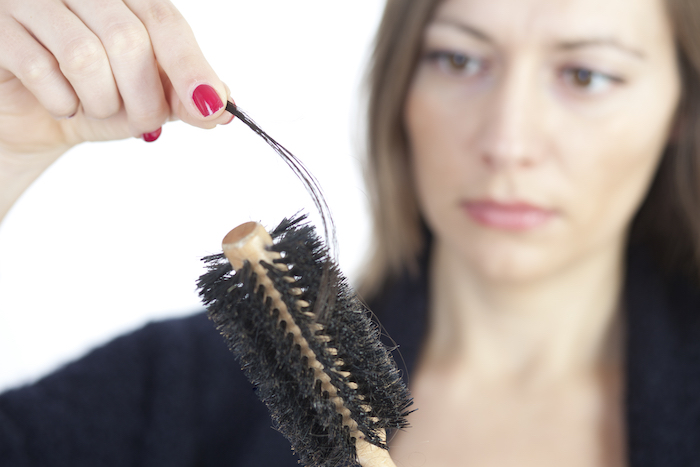 Depending on what is causing it hair loss can affect either your scalp or your entire body. It can come gradually or suddenly and anyone be it men, women or children can experience it. Hair loss can be hereditary, due to medications or hormonal changes.
Depending on what is causing it hair loss can affect either your scalp or your entire body. It can come gradually or suddenly and anyone be it men, women or children can experience it. Hair loss can be hereditary, due to medications or hormonal changes.
The most common types of hair loss include;
- Alopecia areata
- Anagen Effluvium
- Scarring alopecia
- Male and female pattern baldness
- Scarring alopecia
- Telogen effluvium
Alopecia Areata
Alopecia Areata causes patches of baldness the size of a coin which mostly appears on the scalp but can occur anywhere on the body. This condition mostly affects teenagers and young adults. It is caused by an underlying problem within the immune system such as diabetes, downs syndrome or an overactive thyroid. Hair in most cases grows back after a few months. However, some people may go on and develop a severe form of hair loss like;
- Alopecia Universalis which is lack of hair on the scalp and body
- Alopecia totalis which refers to lack of hair on the scalp
Anagen Effluvium
Anagen effluvium affects the scalp, face, and body. This type of hair loss is caused by chemotherapy. Anagen effluvium hair loss is temporary and the hair grows back after the chemotherapy has stopped.
RELATED: Medical Tourism: Hair Transplant a Growing Option in the UAE
Male and Female pattern baldness
Male pattern baldness starts usually in the late twenties or early thirties and follows a pattern of a receding hairline. This is followed by thinning of the hair on the crown and temples. It can sometimes progress to complete baldness although this is not very common. It is caused by oversensitive hair follicles which are linked to having too much of a certain male hormone.
In female pattern baldness, the hair usually thins on top of the head. It is especially noticeable in women who have been through menopause.
Scarring alopecia
It is also known as cicatricial alopecia and it is caused by complications from another condition. In scarring alopecia, the hair follicle is completely destroyed and the hair will not grow back. The conditions that can cause scarring alopecia include;
- Lichen planus. It is an itchy rash that affects many areas in the body.
- This condition affects the body’s connective tissues and results in hard, puffy and itchy skin.
- Discoid lupus. This is a mild form of lupus that affects the skin and causes scaly marks and hair loss.
- Frontal fibrosing alopecia. It affects post-menopausal women whereby the hair follicles are damaged and hair is unable to grow back.
- Folliculitis decalvans. It affects men and causes scarring and baldness in affected areas.
Telogen effluvium
This condition causes the widespread thinning of hair but it is unlikely to lose all the hair. The hair usually grows back after six months. It is caused when the body is reacting to;
- Hormonal changes like pregnancy
- Intense physical stress like childbirth
- Intense emotional stress
- Crush dieting
- Short-term illness like a severe infection
- Long-term illness like liver or cancer disease
- Medications such as beta blockers or anticoagulants
Some types of hair loss do not require treatment as the hair grows back naturally within a short period of time while in others the hair loss is permanent. Treatments for hair loss include surgery, medications, laser therapy and hairpieces or wigs. Sometimes the doctor may combine some of these treatments for best results.

